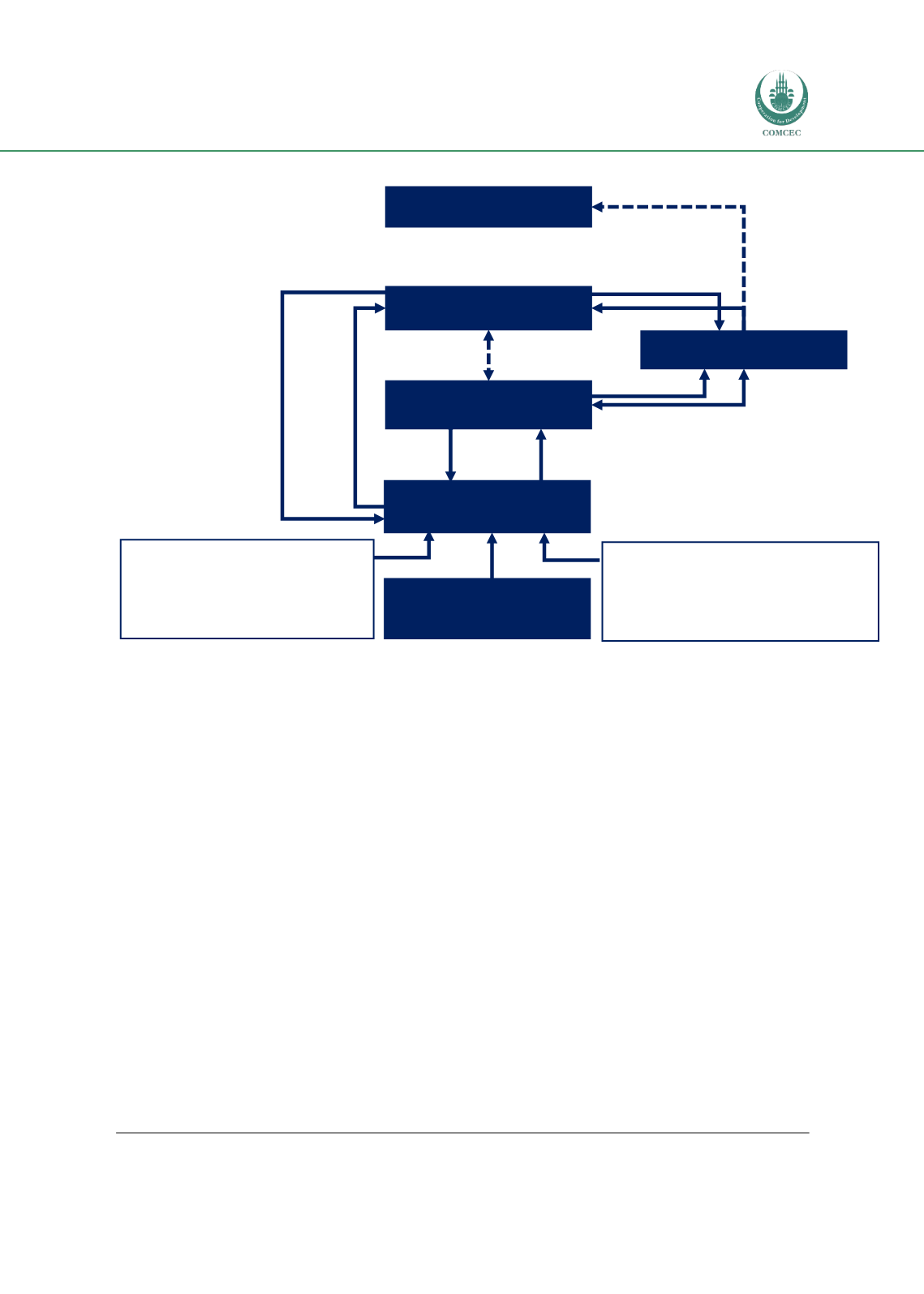

Improving Agricultural Market Performance:
Creation and Development of Market Institutions
89
Figure 6 – Operators involved in warehouse system
Source: Investment Consulting Associates – ICA (2017), based on Onumah, G. (2013)
Highly perishable commodities are unsuitable for warehousing, while the existence of a system
of quality grading and certification helps ensure common valuation for warehoused goods.
Commodities subject to significant price swings are more suitable, since there is an incentive
to use warehouse receipts to smooth price fluctuations.
Examples of successful WRS systems in OIC countries include Kazakhstan, Tanzania, and
Uganda.
Kazakhstan
Kazakhstan, one of the largest wheat producers and exporters in the world, is a country in
which the warehouse receipt system has proven successful: it is estimated that international
banks lend more than US$1 billion a year against warehouse receipts, and local banks even
more. Local banks in Kazakhstan started financing grain traders against warehouse receipts in
the early 1990s, but there were few standards and controls, and significant fraud. Banks,
however, responded by setting up their own warehousing operations. In 2001 and 2002 a
more formal system of warehouse receipts was developed with donor support, backed by
enabling legislation governing both primary and secondary markets.
The legislation allowed banks to take possession of warehoused goods in cases of borrower
default, without the need for a court order. The new legislation, by providing greater certainty
140
Ibid
Depositors
Commodity Exchange
Buyers
Financial Institutions
Certified warehouse
operators
WR
Credit
WR
Payment
WR
Commodity
Warehouse regulatory
agency
WR
Commodity
Market supporting systems:
Market Information System
Warehouse legislation
Commodity standards
Enabling policy
Licensing requirements:
•
Operator capital
adequacy
•
Insurance cover
•
Performance bond


















